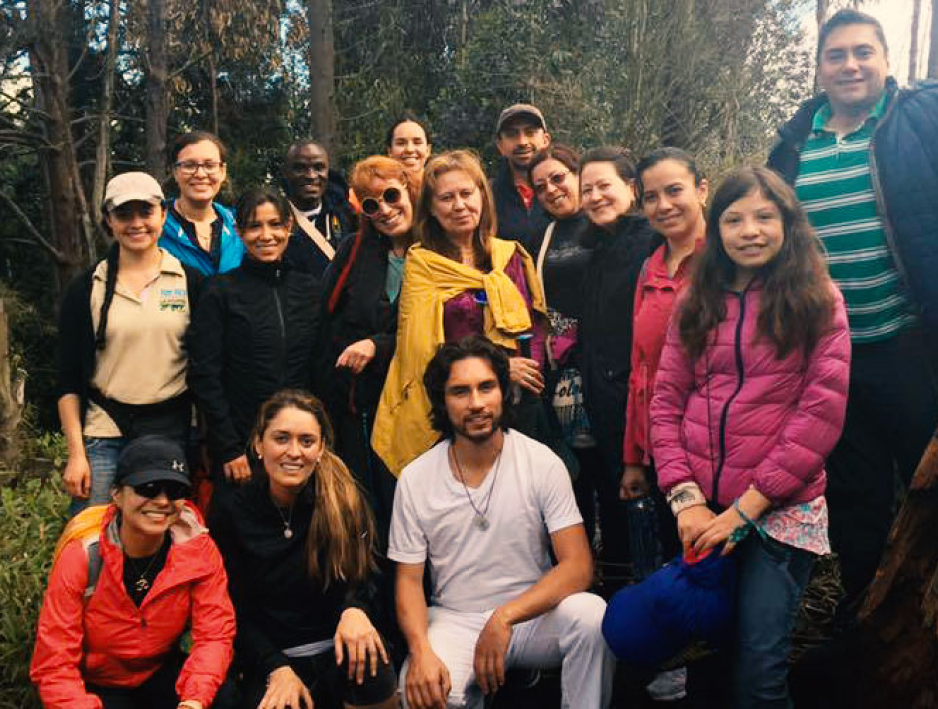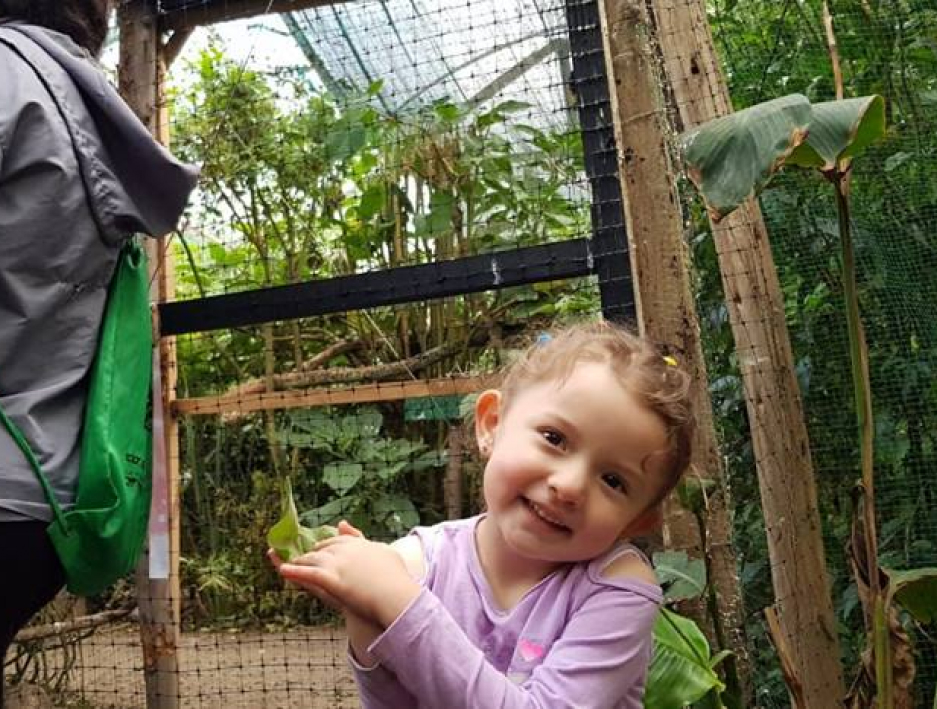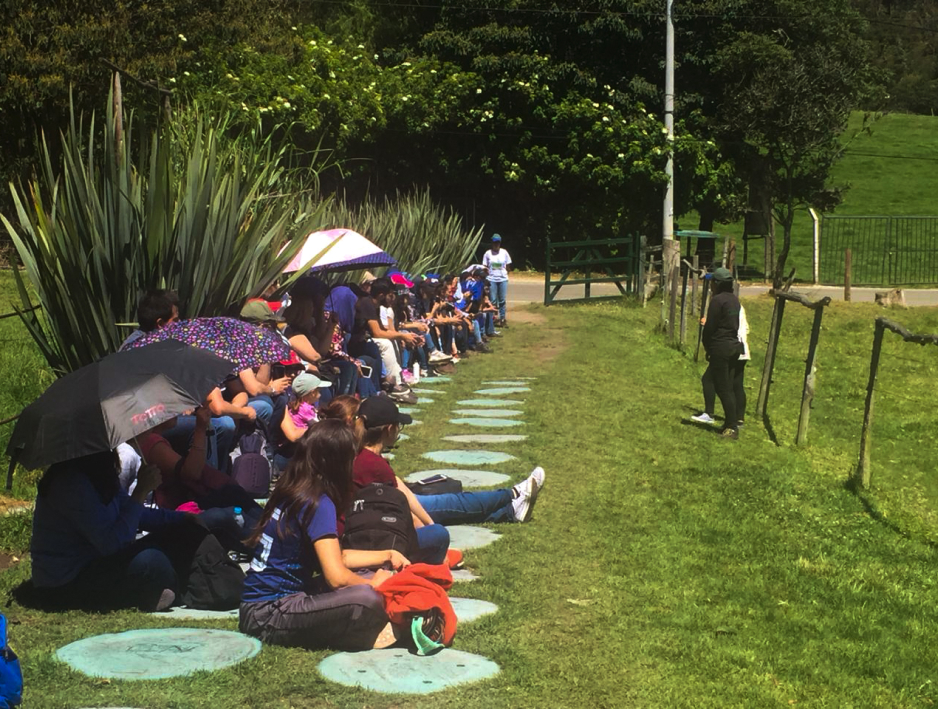Large numbers of brightly coloured poison dart frogs are smuggled around the world, but can a project that is hand-rearing the endangered amphibians help to save them?
I It looked like an ordinary piece of luggage filled with clothes. Then police inspectors at Bogóta’s El Dorado International Airport noticed something strange at the bottom of the bag – security X-rays revealed a curious dark cluster amid the clothes.
The mysterious clump turned out to be hundreds of black photographic film canisters. But when officials opened the canisters, they were found not to contain any film.
Packed inside were 424 critically-endangered frogs, each with a black market value of up to $2,000 (£1,479). Some had electric yellow and black stripes, others were milky green with splodges of neon orange, a few lay lifeless; all were highly poisonous.
According to police, the species had been poached from the Chocó and Valle del Cauca regions of the Colombian Pacific and were on their way to Germany.
But this incident on 13 April 2019 was merely part of an ongoing problem with wildlife smuggling in Colombia, which has around 850 species of amphibians and the world’s second highest diversity of frogs.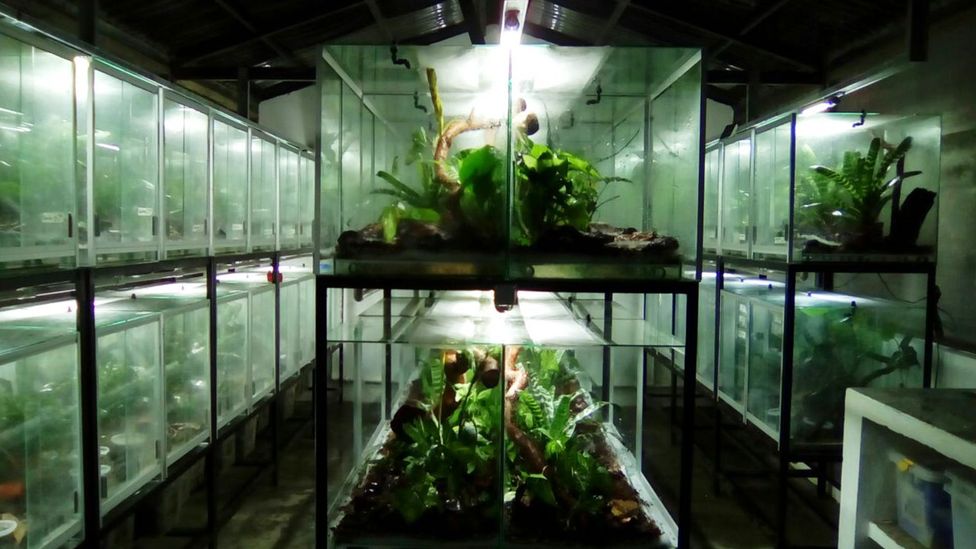
Breeding poison dart frogs in captivity can be difficult and laborious but experts at Tesoros de Colombia hope it can replace the illegal pet trade (Credit: Tesoros de Colombia)
You might also like:
- The animals that will survive climate change
- The hunt for the fish pirates who exploit the sea
- How a tiny wasp saved an industry
Collectors in Europe and the United States are particularly drawn to poison dart frogs, one of the most toxic animals on the planet. Each can produce enough poison to kill 10 people, but their lurid, technicolour skin that is supposed to warn off predators also makes them highly prized. Nearly 200 amphibian species in Colombia, the vast majority of which are frogs, are classified as endangered or critically endangered in 2020, according researchers at the Humboldt Institute in Germany.
But one pioneering project is attempting to help Colombia’s endangered wild frogs with an unusual approach – legal breeding. Initially founded in 2005, Tesoros de Colombia is the country’s first and only commercial breeding operation, offering legitimate, captive-bred specimens at lower prices than those snatched by traffickers from Colombia’s jungles.
“To save a species you have to apply practical solutions to the threats,” says founder Iván Lozano, a self-funded frog enthusiast who studied at the UK’s Durrell Wildlife Conservation Trust and later worked at the Bogotá Wildlife Rescue Centre. “I learned that over time.”
Due to lengthy bureaucratic procedures, it wasn’t until November 2011 that Tesoros was granted a permit to legally export one native species, the yellow-striped poison frog (Dendrobates truncatus). By 2015, it gained permits for several others such as the green and black poison frog (D. auratus), the Kokoe poison frog (Phyllobates aurotaenia), and the famed golden poison frog (P. terribilis). Now, Lozano breeds seven species of poisonous frogs, delivering them mostly to the United States and Europe but also Asia.
The most sought-after is Colombia’s Oophaga frog, a so-called “obligate egg-feeder”, whose tadpoles must be fed individual unfertilised eggs by hand, replicating the behaviour of mother frogs in the wild. “It is extremely labour-intensive, but these are also the most threatened and desired species,” explains Lozano.
The demand for those species that are difficult to breed in captivity is very high – Sandra Flechas
His efforts to replace illegally captured frogs have made him famous among American collectors, who – in part thanks to Lozano – are increasingly seeking legally-traded, eco-friendly animals. Production of these Oophaga specimens by Tesoros has risen from 30 to 150 a year, but supply is still unable to meet demand.
Robert Zahradnik, a 37-year-old collector based in Colorado, believes legal breeding has forced many collectors to change their mindsets. “There is now peer pressure to buy sustainable frogs,” he says. “Any posting of questionable frogs on social media is met with resistance [by the community] in the form of comments calling out the origins. Meanwhile, sustainable frogs from Tesoros are considered something to be proud of.”
Parts of the conservation community, however, have been hesitant to fully endorse projects that seek to protect endangered animals through captive breeding. In the murky case of tiger farms across Asia, instead lowering prices and reducing demand for illegally collected animals, they spurred demand for both captive-bred and wild-caught animals. But in the case of Tesoros, the data appears to confirm Zahradnik’s claims.
A significant proportion – and in some cases 100% – of important frog species imported to the US between 2014 and 2017 were legally-bred, according to a recent study. While those figures are limited, due to uncertainty over smuggling figures, the author believes it is a strong case for legally-bred wildlife. “This isn’t the #MeToo of plants and animals, but there are serious issues that need to be discussed,” says Justin Yeager, who wrote the report. “Biocommerce isn’t perfect. You need regular buyers to stay financially sustainable, and that demands a ‘collector’ mentality. However, it’s an opportunity to change the culture of consumption.”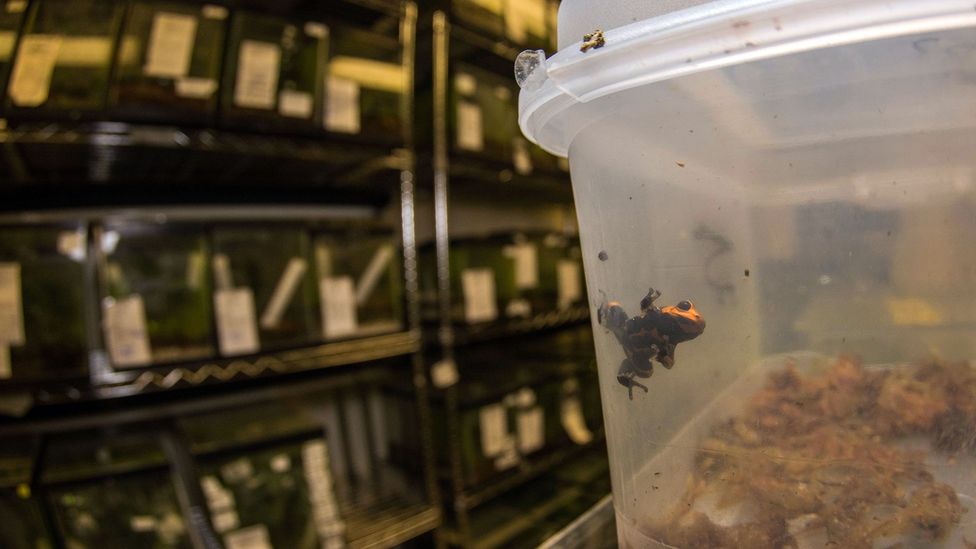
The stigma associated with illegally traded poison dart frogs means many collectors actively seek out captive bred animals (Credit: Anton Sorokin/Alamy)
But Sandra Flechas, who works for the International Union for the Conservation of Nature’s Amphibian Specialist Group in Colombia, says that although legal breeding has proved to be an “efficient mechanism” for reducing the illegal traffic, the output isn’t yet enough. “The demand for those species that are difficult to breed in captivity is very high and there are not enough centres that reach those levels of production,” she says.
According to a study published in 2019, 80,000 Lehmann’s poison frogs have been poached in the past four decades. The IUCN lists the species as “critically endangered” with the population decreasing. “The problem is still very, very serious,” says Pablo Palacios Rodriguez, one of the authors of the report and a herpetologist at the University of the Andes, Colombia. “The socio-economic problems of the region mean traffickers can pay locals to help them. We need to offer communities alternatives through ecotourism and conservation programs.”
Yet the main challenge faced by Tesoros is financial viability. The operation faces fees for laboratory space, permits, lawyers, inspections, and government lobbying. Lozano says he racked up $500,000 (£381,236) debt in the process of being granted permits, and only began paying himself a salary in 2018. But Tesoros expects to break even in 2022.
We believe that we can save some of these species from extinction – Iván Lozano
By proving that it is possible to make a profit from legal trade, Lozano hopes to deal the $7-23bn illegal global wildlife trade a bodyblow. For now, based in a modest farmhouse in the state of Cudinamarca surrounded by 5.5 hectares of misty rainforest, the team of eight at Tesoros continue to carefully breed frogs in their bid to end the trafficking of Colombian wildlife.
As Lozano is talking, a thick styrofoam package is being prepared for a 72-hour trip to Japan by assistants wearing blue gloves. Dozens of luminous frogs, each accompanied by a serial number, are placed into plastic pots with damp moss, fresh plant clippings as well as smoothed air holes and a heating pad to reduce sudden changes in temperature during the journey.
“We believe that we can save some of these species from extinction,” says Lozano. “One frog at a time.”
—
Join one million Future fans by liking us on Facebook, or follow us on Twitter or Instagram.
If you liked this story, sign up for the weekly bbc.com features newsletter, called “The Essential List”. A handpicked selection of stories from BBC Future, Culture, Worklife, and Travel, delivered to your inbox every Friday.

Aliquet cursus semper amet viverra viverra vulputate purus. Quam enim eleifend amet vestibulum. Sit sed elementum sed malesuada ac tortor blandit. Non volutpat magna feugiat eu morbi diam porttitor molestie. At integer enim mauris montes porta. Urna tellus interdum lectus velit enim sodales bibendum vel in. Viverra lorem non id pulvinar donec orci nec dolor rutrum. Tortor libero nulla amet diam. Elit enim sit rhoncus senectus commodo habitant neque cras vitae. Proin amet ut at commodo eleifend. Faucibus faucibus fringilla nam urna viverra turpis. Diam vitae facilisi praesent urna sed tempus quis feugiat facilisi.






